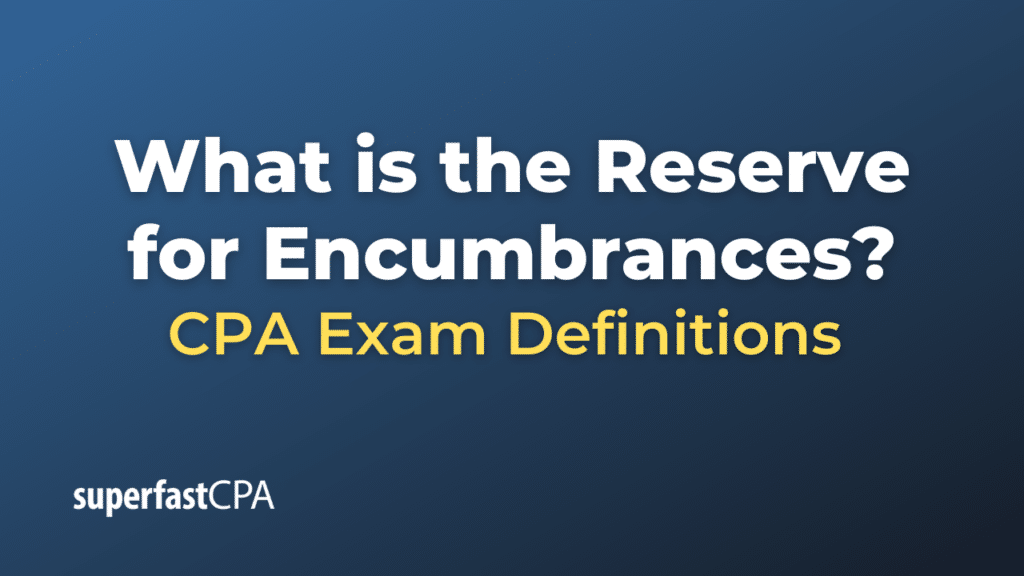Reserve for Encumbrances
The reserve for encumbrances is a financial accounting concept primarily used in governmental accounting, particularly in the context of budgetary accounting. An encumbrance represents a commitment of funds for planned expenditures, such as purchase orders or contracts, which have been approved but not yet paid or fulfilled. The reserve for encumbrances ensures that the government entity does not overspend its budget or inadvertently commit funds that are already earmarked for other purposes.
Here’s a breakdown of the concept:
- Encumbrance: When a government agency issues a purchase order or enters into a contract for goods or services, it creates an obligation to pay in the future. This obligation, even though it’s not an actual expense yet, is called an encumbrance.
- Reserve for Encumbrances : This reserve is essentially an account set aside on the books to recognize these commitments. When an encumbrance is established, the budgeted funds are “reserved,” ensuring they are available when the actual payment is due.
- Expense Recognition: When the goods or services are received and the actual expense occurs, the encumbrance is reversed, and the expense is recorded in the financial statements. The funds move out of the reserve for encumbrances and are recognized as an actual expenditure.
Example of the Reserve for Encumbrances
Let’s delve into a more detailed example to illustrate the concept of the “reserve for encumbrances” in governmental accounting.
The Parks and Recreation Department of the City of Evergreen is given an annual budget of $500,000 for park maintenance and improvements.
In March, the department’s manager decides to build a new playground in one of the city’s parks. After obtaining quotes, the manager chooses a contractor and signs a contract for $100,000 to build the playground.
March Accounting Entries:
- Encumber the Funds:
- Debit (increase) Encumbrances: $100,000
- Credit (increase) Reserve for Encumbrances: $100,000
By making these entries, the City of Evergreen has earmarked $100,000 of its budget for the playground project. The budget available for other park improvements now effectively stands at $400,000, even though no money has been physically spent yet.
Fast forward to August. The playground project is completed, and the contractor sends the final invoice to the City of Evergreen.
August Accounting Entries:
- Reverse the Encumbrance:
- Debit (decrease) Reserve for Encumbrances: $100,000
- Credit (decrease) Encumbrances: $100,000
- Recognize the Actual Expense:
- Debit (increase) Park Improvement Expense: $100,000
- Credit (decrease) Cash (or Accounts Payable, if not paid immediately): $100,000
With the completion of the project and the payment (or commitment to pay) to the contractor, the city has converted the encumbrance into an actual expense.
The “reserve for encumbrances” mechanism ensures that the City of Evergreen did not accidentally allocate the $100,000 earmarked for the playground to some other project, providing a means to manage and control budgeted funds accurately.













